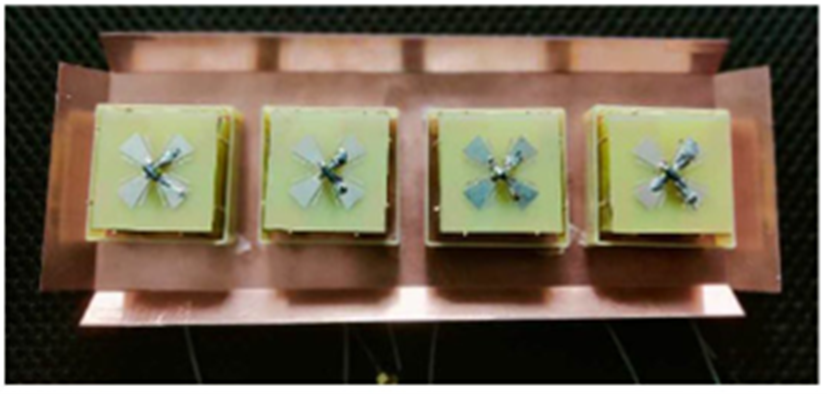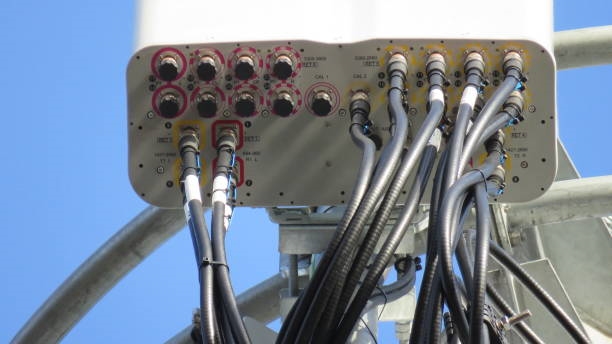Overview
This article outlines the research background and significance of MIMO base station antennas, reviews the current research status, and summarizes several mainstream decoupling methods used for MIMO base station antennas.
Research Background
With the development of mobile communication technologies, society is becoming increasingly information-driven. Growing numbers of users and rising data demands drive communications toward higher throughput, lower latency, and greater capacity. As the frontend of the communication system, base station antennas have evolved rapidly to meet these requirements.
Over the generations, base station antennas have evolved from omnidirectional antennas in 1G, to three-sector directional antennas in 2G, to dual-polarized antennas using polarization diversity in 3G, and then to MIMO and massive MIMO antenna systems in 4G and 5G. Increasing channel capacity remains a central objective for antenna design.

According to the Shannon capacity formula for multi-antenna systems:

where N is the number of antennas, W is bandwidth, and SNR is signal-to-noise ratio. Channel capacity can be increased by enlarging antenna count, bandwidth, or SNR. Because spectrum resources are limited and SNR improvement is constrained, MIMO multi-antenna systems are an essential approach to improving capacity.
Increasing antenna count while keeping base station size and deployment cost manageable forces antenna elements into closer physical proximity. This leads to increased mutual coupling, which can reduce efficiency and distort radiation patterns, degrading system performance.
Polarization diversity increases channel capacity and mitigates multipath fading, and has been used in base station antennas since 3G. Compared with single-polarized antennas, dual-polarized antennas require consideration of mutual coupling in both the E-plane and H-plane. In MIMO systems, this increases the complexity of coupling problems and makes decoupling more challenging. Therefore, research on decoupling techniques for MIMO base station antennas is important.
Research Status
Current mainstream decoupling methods for MIMO base station antennas fall into two categories: blocking methods and near-field cancellation techniques. The following sections summarize representative work in these areas.
Blocking Methods
Blocking methods use metal strips, metal posts, or metal baffles to obstruct spatial electromagnetic coupling between antenna elements. These techniques are widely used in industry, but adding metal structures can affect antenna matching and polarization isolation. Metal baffles are typically used when element spacing is relatively large; large spacing hinders integration of many antennas in limited volume and may introduce cavity modes that degrade radiation characteristics.

Another common approach is adding resonant structures with electromagnetic band-stop characteristics between elements to block wave propagation.
In October 2020, a research group at Concordia University proposed a decoupling method that loads a baffle with split-ring resonators. By surrounding each antenna element with a ring of split-ring resonators forming a band-stop filter, the method effectively blocks mutual coupling without increasing profile height. With horizontal element spacing of 0.5 λ0, port isolation exceeding 25 dB within the band was reported.

Near-Field Cancellation Techniques
Near-field cancellation techniques aim to generate fields that destructively interfere with coupling fields at the ports.
In December 2017, a research group proposed the concept of an array-antenna decoupling surface (ADS) to mitigate mutual coupling in large-scale MIMO arrays. ADS is a thin layer composed of multiple small metal patches on a dielectric substrate. Placing a specially designed ADS over a MIMO antenna produces diffracted waves whose amplitude matches and phase opposes the coupling waves, enabling cancellation at element ports and improving port isolation while causing little degradation to radiation performance.
In April 2020, to address inferior decoupling for interleaved MIMO layouts when using a single ADS, the same group proposed a phase-compensated decoupling method for interleaved MIMO arrays. By adding a staple-shaped probe between E-plane array elements to equalize the phase of E-plane coupling to that of H-plane coupling, and combining this with ADS, they achieved over 25 dB isolation at a close spacing of 0.5 λ0 and reduced radiation pattern distortion caused by coupling.

In July 2023, a research group proposed a hybrid decoupling method for interleaved dual-polarized arrays based on ADS and artificial magnetic conductor (AMC). Replacing the conventional ground with AMC reduced profile height (0.315 λ0), and combining AMC with ADS achieved over 22 dB isolation at 0.59 λ0 spacing while improving radiation pattern distortion due to coupling.
Summary
This article described the background and significance of MIMO base station antennas and reviewed various decoupling techniques. The surveyed works were compared in terms of isolation and decoupling bandwidth, and the advantages and limitations of existing approaches were outlined. In general, current decoupling methods are limited mainly to blocking and near-field cancellation. Common issues include narrow decoupling bandwidth, complex or high-profile structures, and difficulty simultaneously achieving high port isolation, good impedance matching, and preserved radiation patterns. There are few solutions directly applicable to large-scale MIMO base station arrays. Future research could explore new same-frequency decoupling approaches for MIMO base station antennas.
 ALLPCB
ALLPCB







